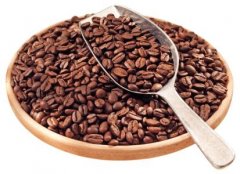Introduction to Lazmus Manor of Colombian Coffee Bean producing area with Water washing treatment

Approximately 2.7 billion coffee trees have been documented in Colombia, 66 per cent of which are planted in modern plantations and the rest on small traditionally run farms. And fortunately, unlike Brazil, Colombia doesn't have to worry about frost. [3] the suitable climate in Colombia provides a real "natural pasture" for coffee. Coffee trees in Colombia are mainly cultivated in the Andes, on steep slopes about 1300 meters above sea level, where the annual temperature is about 18 degrees Celsius, annual rainfall is 2000 to 3000 millimeters, latitude 1 °- 11 °15 north, longitude 72 °- 78 °west, the specific range of elevation is more than 2.000 meters. A special combination of factors, latitude, altitude, soil, plant origin of species and varieties of coffee production in Colombia's coffee growing area, rain patterns produced by the climate of the coffee growing area and tropical convergence, changing topography, luminosity, favorable temperature range throughout the year, moderation and Rain Water's distribution And include some common cultural practice areas in the process of selective logging and transformation, including washing and drying. Very suitable for the growth of coffee, mild climate, humid air, and can be harvested regardless of season. This is why Colombian coffee is of high quality. Colombia has three Codiera mountains running north and south, right into the Andes. Coffee is grown along the highlands of these mountains. The mountain steps provide a diverse climate, where the whole year is the harvest season, and different kinds of coffee ripen at different times.
The pure taste of Colombian coffee comes from Colombia's natural environment with the most favorable conditions for coffee growth. But beyond that, it is inseparable from the hard work of local growers. In Colombia, coffee cultivation has reached 1.07 million hectares, there are about 302000 coffee plantations in the country, and 30 to 40 per cent of the rural population depends directly on coffee production. Although there are many farms in Colombia, they are not large in area. The area of each farm is only about 2 hectares, and more than 80% of the coffee plantations have only about 5000 coffee trees, an average of 3000. Thus it can be seen that agriculture in Colombia belongs to the small-scale farm type. The locals plant tall trees or banana trees around the coffee trees. Build an Arbor for coffee trees at the seedling stage to ensure the cool and humid environment needed for coffee growth. Due to the high humidity, small temperature difference and slow ripening of coffee beans in the coffee forest, it is conducive to the accumulation of caffeine and aromatic substances, so the quality of coffee is the best. [1]
Quality of producing area
Colombian Coffee
No matter in terms of yield or texture, Colombian coffee is first produced by Medellin, which is characterized by full granules, rich nutrition, moderate acidity, good balance, rich aroma and soft taste. In addition to Medellin, the capitals of two neighboring provinces in the south, Armenia and Manizales, are also famous coffee producers, which formerly belonged to Medellin's province of Andiquio, which had a Caldas football team that played in the last Toyota Cup. These three places form the world-famous "coffee zone". [1]
Coffee workers go up the mountain to pick coffee beans (also known as coffee cherries) by hand, so they can pick carefully and pick the most ripe and full fruits. The vast majority of Colombian coffee beans are water-washed and moderately roasted with a light silky and sometimes sour taste, which is not as strong as Brazilian coffee and Italian Expresso, and is known as "green gold"
Important Notice :
前街咖啡 FrontStreet Coffee has moved to new addredd:
FrontStreet Coffee Address: 315,Donghua East Road,GuangZhou
Tel:020 38364473
- Prev

A brief introduction to the elegant and complex Panamanian Poquet Flower Butterfly Coffee Bean Esmeralda Manor
When it comes to coffee prices, we should pay great attention to a manor in Panama, and it can even be said that so far, no other single estate has had such an impact on coffee farming in Central America. This is Esmeralda Manor, which belongs to and is run by the Peterson family. Unlike some other high-priced coffee (example
- Next

Soft and smooth Colombian Coffee in the Andes, the cultivation of Lazmus Manor Jane
The status of coffee in Colombia can be seen from the following examples. All vehicles entering the country must be sprayed and sterilized so as not to inadvertently cause disease and damage to coffee trees. The National Coffee Management Association of Colombia, like the National Management Association of Kenya, is a model of coffee organization. Compared with other producing countries, Colombia is more concerned with developing products and promoting production. It is this one.
Related
- Does Rose Summer choose Blue, Green or Red? Detailed explanation of Rose Summer Coffee plots and Classification in Panamanian Jade Manor
- What is the difference between the origin, producing area, processing plant, cooperative and manor of coffee beans?
- How fine does the espresso powder fit? how to grind the espresso?
- Sca coffee roasting degree color card coffee roasting degree 8 roasting color values what do you mean?
- The practice of lattes: how to make lattes at home
- Introduction to Indonesian Fine Coffee beans-- Java Coffee producing area of Indonesian Arabica Coffee
- How much will the flavor of light and medium roasted rose summer be expressed? What baking level is rose summer suitable for?
- Introduction to the characteristics of washing, sun-drying or wet-planing coffee commonly used in Mantenin, Indonesia
- Price characteristics of Arabica Coffee Bean Starbucks introduction to Manning Coffee Bean Taste producing area Variety Manor
- What is the authentic Yega flavor? What are the flavor characteristics of the really excellent Yejasuffi coffee beans?

